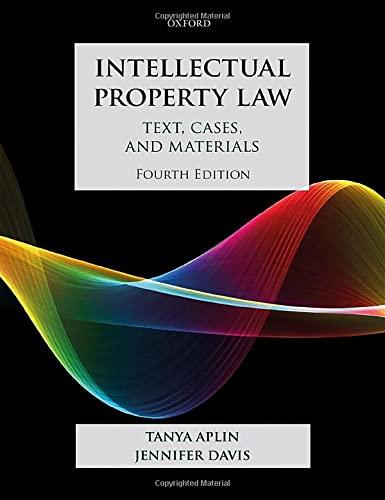Question
review the Scenario fact pattern: Steven owns a bar, The Lucky Duck. The Lucky Duck employs five bartenders, all of whom he has provided training
review the Scenario fact pattern:
Steven owns a bar, The Lucky Duck. The Lucky Duck employs five bartenders, all of whom he has provided training on mixing drinks and general employment issues. It also employs a security person on weekends, when the patrons are a bit rowdier. The Lucky Duck has posted signs in the restroom giving patrons the phone number for local cab companies in the event they are too intoxicated to drink home.
One Saturday night, Michael went to The Lucky Duck with a group of friends to celebrate his promotion. His group of friends was ordering rounds of shots from all the bartenders, and large beers all night, toasting to Michael's recent success. As the night went on, the group became more intoxicated, and rowdier. At 1am, one of the bartenders, Melissa, told Michael that it was his "last round," as he was staggering when he walked up to the bar. After finishing that beer, Michael had his friend go buy him another beer from a different bartender, Sally. Shortly after he finished his last drink, Michael decided that he was ready to head home. Security watched as Michael walked out towards the parking lot, muttering "what a drunk."
On his way home, Michael ran a stop sign and ran into Mindy, who was driving home from a late shift as a nurse at the local hospital. Mindy was severely injured with a concussion, fractured ribs, internal bleeding, a broken arm, and lacerations to her face and hands, and contusions where her seatbelt dug into her. Mindy was forced to take several months off work to recover, and her hospital bills were large.
Mindy sought out an attorney, who told her that she should sue Michael. Michael however, lost his job after the accident, and was drowning in debt. Therefore, the attorney told Mindy that she should also sue The Lucky Duck for overserving Michael.
Review the 3 following cases:
Englund v. MN CA Partners/MN Joint Ventures, 555 N.W.2d 328
Koehnen v. Dufuor, 590 N.W.2d 107
Kunza v. Pantze, 527 N.W.2d 846
explain how they can be distinguished from our fact pattern with the Lucky Duck in terms of the law and the facts. Think in terms of differences: look at each case and compare it to our fact pattern. The cases are to be distinguished from our fact pattern. You should explain the ways in which the cases can be distinguished from our fact pattern in terms of the law and the facts.
- Write the case name and give the proper Bluebook citation.
- Explain the main facts and the court's holding.
- Explain how the law is different in the cited case as compared to our fact pattern.
- Explain how the facts are different in the cited case as compared to fact pattern.
- Each case is distinguishable from our fact pattern, but not always on both factual and legal grounds. Cases can be distinguished either way. If you find the law in one of the review cases does apply to our fact pattern, simply state so. In that event, the case facts will be the distinguishing grounds on which to focus.
Step by Step Solution
There are 3 Steps involved in it
Step: 1

Get Instant Access to Expert-Tailored Solutions
See step-by-step solutions with expert insights and AI powered tools for academic success
Step: 2

Step: 3

Ace Your Homework with AI
Get the answers you need in no time with our AI-driven, step-by-step assistance
Get Started


